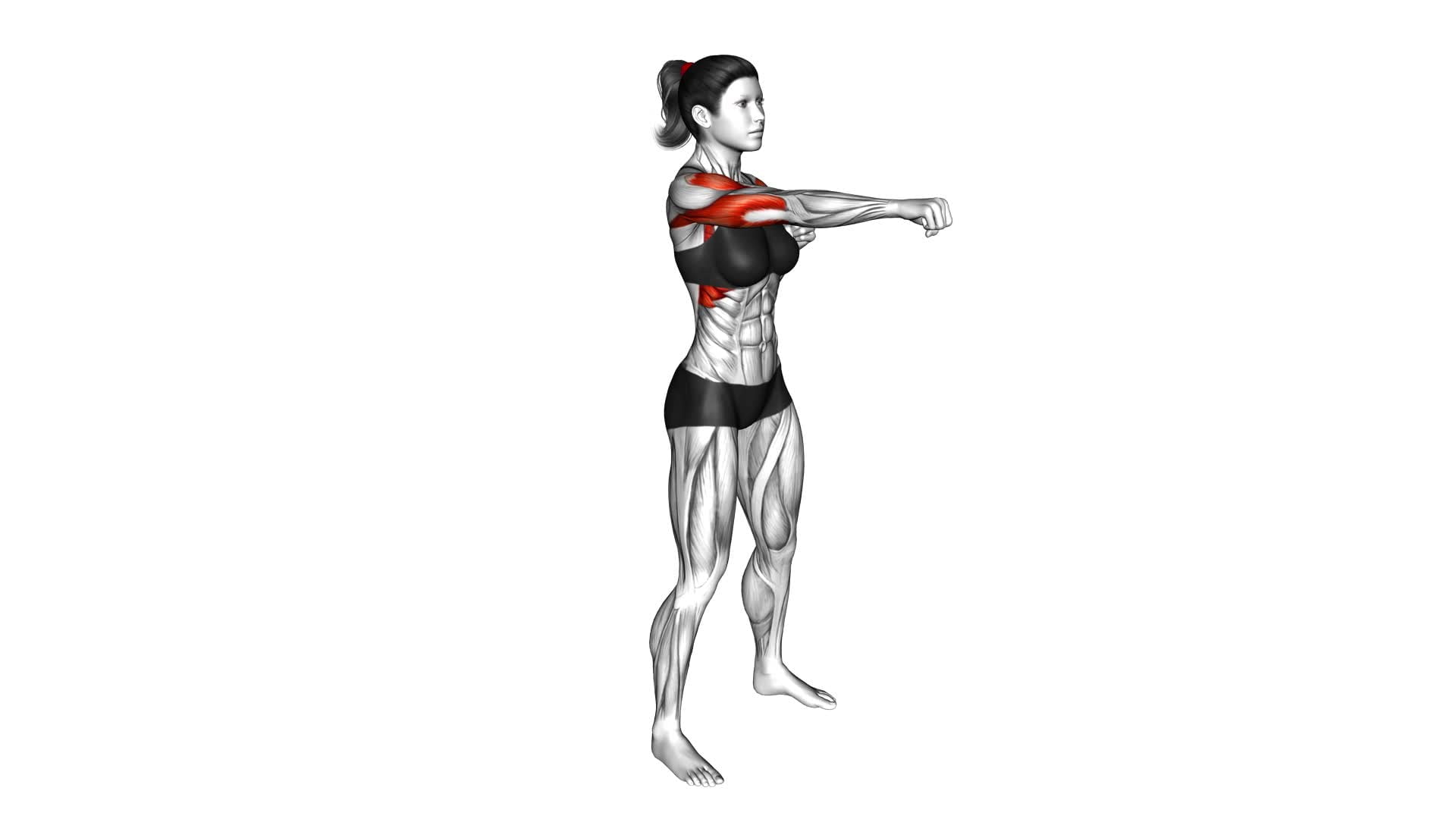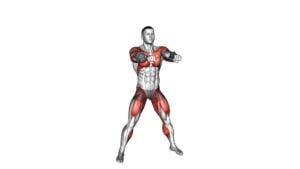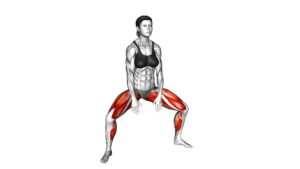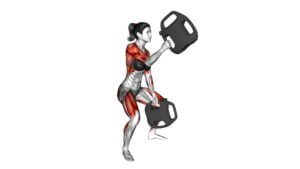Alternate Punching (female) – Video Exercise Guide & Tips

Are you ready to take your punching skills to the next level?
Watch This Exercise Video
In this video exercise guide, we'll show you how to master the art of alternate punching.
Get ready to perfect your stance, footwork, and learn basic to advanced punching techniques.
With our helpful tips and expert guidance, you'll improve your speed, power, and overall performance.
Get ready to unleash your inner fighter and dominate your workouts like never before!
Key Takeaways
- Proper stance and footwork are essential for stability and balance in punching.
- Punching techniques include jabs, crosses, hooks, and uppercuts in both boxing and martial arts.
- Intermediate punch combinations involve defensive maneuvering, counter punching, and varied punches.
- Advanced punching drills focus on slip and counter, coordination, precision, speed, and power.
Proper Stance and Footwork
To achieve proper stance and footwork in alternate punching, position yourself with your feet shoulder-width apart. This is the foundation of your technique and it's crucial to get it right. A proper stance provides stability, balance, and power, while proper footwork allows you to move quickly and efficiently. Keep your weight evenly distributed between both feet, with your knees slightly bent. This will give you a solid base from which to generate power and maintain stability throughout your punches.
When it comes to footwork techniques, there are a few key principles to keep in mind. First, always stay light on your feet and be ready to move in any direction. This will allow you to quickly adjust your position and evade your opponent's attacks. Second, practice pivoting on the balls of your feet. This will enable you to rotate your hips and generate more power behind your punches. Finally, make sure to maintain good balance at all times. This means keeping your weight centered and not leaning too far forward or backward.
Basic Punching Techniques
Now that you've mastered proper stance and footwork techniques, let's delve into the basic punching techniques. Punching is a fundamental skill in self-defense, whether you're practicing boxing or martial arts. While there are similarities between boxing and martial arts, such as the use of punches, there are also differences in terms of technique and strategy.
In both boxing and martial arts, the jab is a crucial punch. It's quick, straight, and serves as a setup for other punches. The cross, a powerful punch thrown with the rear hand, is also common in both disciplines. Additionally, hooks and uppercuts are essential punches that can be used in various situations.
In boxing, punches are often thrown in combinations, with the goal of outscoring or knocking out your opponent. Footwork and head movement are also emphasized to evade punches and create openings for counterattacks.
In martial arts, punching techniques are typically integrated with kicks, knee strikes, and elbow strikes. The emphasis is on using a combination of strikes to disable or incapacitate an opponent. Techniques like palm strikes and hammer fists are commonly used.
Mastering basic punching techniques is crucial for self-defense. Whether you choose boxing or martial arts, the key is to practice diligently, focusing on proper technique and developing speed, power, and accuracy. Remember, consistency and dedication are the keys to becoming proficient in any martial art or combat sport. So keep training, stay motivated, and always be prepared to defend yourself.
Intermediate Punch Combinations
Practice incorporating different punch combinations to enhance your skills as an intermediate puncher. As you progress in your training, it's crucial to develop a variety of punch combinations to keep your opponents guessing and maximize your effectiveness in the ring. Here are three key elements to focus on:
- Defensive maneuvering: In addition to offensive techniques, it's vital to work on your defensive skills. Practice slipping, ducking, and weaving to evade your opponent's punches while maintaining your balance and positioning. This will help you create openings for counterattacks and minimize the risk of getting hit.
- Counter punching strategies: Counter punching is a valuable skill that allows you to exploit your opponent's openings and turn their attacks against them. Work on timing and accuracy to deliver precise counter punches when your opponent least expects it. This won't only score points but also discourage your opponent from launching further attacks.
- Punch variety: Incorporating a range of punches in your combinations will keep your opponents off balance and increase your chances of landing effective strikes. Experiment with different combinations of jabs, hooks, uppercuts, and crosses to find what works best for you. Add footwork and head movement to create angles and increase the effectiveness of your punches.
By consistently practicing these intermediate punch combinations, focusing on defensive maneuvering, counter punching strategies, and punch variety, you'll take your skills to the next level and become a more formidable and versatile fighter.
Keep pushing yourself and never stop learning and growing in the sport of boxing.
Advanced Punching Drills
As you continue to enhance your skills as an intermediate puncher, incorporating advanced punching drills will further elevate your abilities in the ring. These drills are designed to challenge you and push you to the next level of your training. Advanced punching techniques require precision, speed, and power, and these drills will help you develop all three.
One advanced punching technique that you can practice is the slip and counter. This drill involves slipping your opponent's punch and immediately countering with a powerful punch of your own. This not only improves your defensive skills but also teaches you how to quickly capitalize on openings.
Another advanced punch combination to master is the hook-uppercut-hook. This combination involves throwing a hook punch, followed by an uppercut, and finishing with another hook. This sequence requires coordination and timing, as well as the ability to generate power from your core.
Tips for Improving Speed and Power
To improve your speed and power, focus on incorporating explosive movements into your training routine. Here are three tips to help you enhance your punching abilities:
- Plyometric exercises for explosive power:
Plyometric exercises, such as medicine ball throws and box jumps, can improve your explosive power. These exercises engage your fast-twitch muscle fibers, which are responsible for generating quick and powerful movements. Incorporate exercises like squat jumps, clap push-ups, and explosive lunges into your workouts to develop explosive power in your punches.
- Utilizing resistance training for increased punching speed:
Resistance training, such as using resistance bands or weighted gloves, can help increase your punching speed. By adding resistance to your punches, you're challenging your muscles to work harder and adapt to the added load. This can result in increased strength and speed in your punches over time. Consider incorporating exercises like resistance band punches or shadow boxing with weighted gloves into your training routine.
- Focus on technique and form:
While speed and power are important, it's crucial to prioritize proper technique and form. Focus on maintaining good posture, using proper body mechanics, and engaging your core muscles during your punches. By having a solid foundation of technique, you can maximize your speed and power efficiently.
Incorporating these tips into your training routine will help you improve your speed and power, ultimately enhancing your overall punching performance. Stay consistent, work hard, and watch your skills soar!
Frequently Asked Questions
How Long Should I Practice Alternate Punching Exercises Each Day?
To maximize the benefits of incorporating alternate punching into your full body workout routine, it's recommended to practice for at least 10-15 minutes each day. This will help improve your speed and technique over time.
Consistency is key, so make sure to set aside dedicated time for this exercise. By practicing regularly, you won't only strengthen your upper body and core muscles, but also enhance your coordination and endurance.
Keep pushing yourself and you'll see progress!
Can Alternate Punching Help Me Lose Weight and Tone My Arms?
Alternate punching is a great exercise to help you lose weight and tone your arms. Compared to other arm exercises, alternate punching engages multiple muscle groups, giving you a more effective workout. By incorporating this exercise into your routine, you can improve your overall fitness and increase your calorie burn.
Is It Safe to Practice Alternate Punching if I Have a Shoulder Injury?
If you have a shoulder injury, it's important to consider your safety before practicing alternate punching. Consulting a professional is recommended to determine if it's safe for you.
Alternate punching involves repetitive shoulder movements, which could potentially worsen your injury if not done correctly. By seeking guidance, you can ensure that you're using proper form and modifications that won't put unnecessary strain on your shoulder.
Prioritizing your safety and health is key in any exercise routine.
What Are Some Common Mistakes to Avoid While Performing Alternate Punching?
When performing alternate punching, it's important to be mindful of common mistakes to avoid injuries and ensure proper form and technique.
One mistake to steer clear of is throwing punches with your arm alone, instead of engaging your entire body.
Another mistake is neglecting to protect your wrists by keeping them straight and aligned with your forearm.
By being aware of these errors, you can improve your technique and reduce the risk of injury.
Stay focused and punch with precision!
Are There Any Modifications or Variations of Alternate Punching Exercises for Beginners or Individuals With Limited Mobility?
If you're a beginner or have limited mobility, there are modifications and adaptations you can make to the alternate punching exercise.
You can start by using lighter weights or no weights at all.
Focus on maintaining proper form and technique rather than speed.
Another option is to perform the exercise sitting down or using a chair for support.
Remember to listen to your body and make adjustments that work best for you.
Keep pushing yourself and you'll see progress over time.
Conclusion
In conclusion, mastering the art of alternate punching requires proper stance, footwork, and technique. By practicing the basic punching techniques and progressing to intermediate punch combinations, you can enhance your skill level.
Additionally, incorporating advanced punching drills and focusing on improving speed and power will take your abilities to the next level.
Keep pushing yourself and never stop striving for improvement. With dedication and perseverance, you can become a formidable force in the world of punching.

Author
Years ago, the spark of my life’s passion ignited in my mind the moment I stepped into the local gym for the first time. The inaugural bead of perspiration, the initial endeavor, the very first surge of endorphins, and a sense of pride that washed over me post-workout marked the beginning of my deep-seated interest in strength sports, fitness, and sports nutrition. This very curiosity blossomed rapidly into a profound fascination, propelling me to earn a Master’s degree in Physical Education from the Academy of Physical Education in Krakow, followed by a Sports Manager diploma from the Jagiellonian University. My journey of growth led me to gain more specialized qualifications, such as being a certified personal trainer with a focus on sports dietetics, a lifeguard, and an instructor for wellness and corrective gymnastics. Theoretical knowledge paired seamlessly with practical experience, reinforcing my belief that the transformation of individuals under my guidance was also a reflection of my personal growth. This belief holds true even today. Each day, I strive to push the boundaries and explore new realms. These realms gently elevate me to greater heights. The unique combination of passion for my field and the continuous quest for growth fuels my drive to break new ground.







